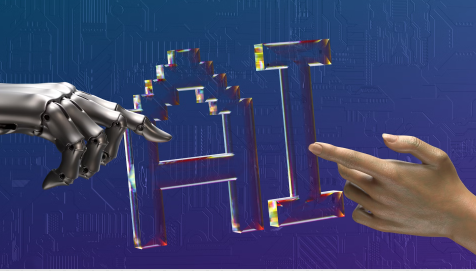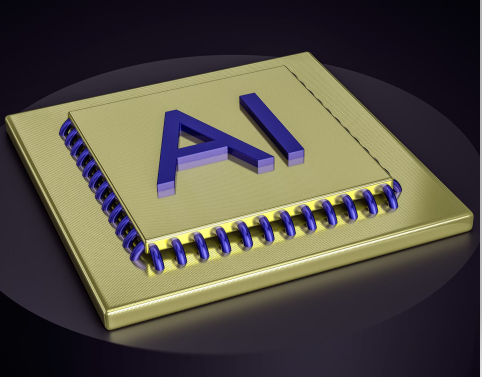How AI Is Changing the Way We Train Athletes
The unmistakable rhythm of footfalls, the deep breath before a race, the calm preceding grappling—this goes beyond physical exertion. It is a metamorphosis. Mongolia’s athletes—be it a national judo champion or a budding basketball star—are no longer just putting in more effort. They are becoming more strategic and training intelligently. The understated accomplice to this revolution? AI. Not a fantasy. A means. An actuality. One that is reshaping professions. Interested in the how? We will be exploring further.
Smarter Training Starts with Data
Now, every drop of sweat counts. In Olympic training centers in Mongolia, athletes use biometric sensors to capture data such as heart rate, muscle load, sleep, hydration, and over 250 other critical metrics across sessions. Coaches utilize AI-powered tools like Catapult and WHOOP to extract actionable insights from the data. It’s no longer “train more.” It’s “train right, today, now.” AI helps in optimizing the training process by tracking performance, sensing fatigue before athletes do, predicting performance dips, and making sure the training remains sharp and safe.
This approach to sports, where every detail can impact the outcome, is becoming increasingly visible in team sports, especially in disciplines like basketball, where the dynamics of a match change in seconds. That’s why attention to NBA betting odds is attracting not only betting enthusiasts but also those who value the depth of analytics. Knowing the odds is not just about numbers; it is a reflection of the form, strategy, and subtle shifts that happen behind the scenes of each match.
Personalized Coaching in Real Time
The old clipboard and stopwatch? Retired. AI now whispers into the coach’s ear in real time. Here’s how training in Mongolia is changing, session by session:
- Smart Cameras from companies like Playermaker track every movement in wrestling and boxing gyms, detecting technique flaws instantly.
- AI speech analysis helps coaches fine-tune vocal cues for archers and shooters, where calm breathing changes everything.
- Wearables from Zepp and StatSports alert coaches when an athlete’s load is reaching a danger zone—even during live practice.
- Feedback dashboards in Ulaanbaatar’s training hubs give athletes daily recovery and readiness scores, personalized to their body’s rhythm.
And all this? It doesn’t happen tomorrow. It happens during training. Technology is rapidly changing the sports process, turning every activity into an exact science, and this applies not only to preparation but also to the game itself. In the conditions of such dynamics, staying up to date with current trends and events is essential. Websites like MelBet betting company not only allow you to place bets but also offer up-to-date analytical data, news, and insights that help you understand the course of the game more deeply. This is another tool – smart, modern, and involved – in the arsenal of everyone who lives for sports.
Predicting Injuries Before They Happen
Injuries aren’t just the result of bad luck. They follow a certain pattern, and AI can interpret this data. In Mongolia’s judo camps, motion tracking technology created by Israeli startup Biocognify analyzes recorded throws accumulating for over 10,000 hours. AI algorithms predict the risk of injurious movements 72 hours before the movements occur.
The Mongolian national wrestling team saw a 38 percent reduction in soft tissue injuries in 2024. Similar systems now operate in basketball training and flag ankle instability after two missteps. With AI technology, prevention is not just a wish. It is a timeline that athletes can visualize.
Virtual Simulations, Real Results
Step into a room. Put on a headset. And you’re suddenly sparring against the last SEA Games gold medalist. Athletes are now doing that in Mongolia’s newer VR training zones. In collaboration with South Korean tech firm Refract, boxers and taekwondo fighters practice reactions and tactics against virtual opponents trained on real-world data.
And it’s not just fun. Results speak. Ulaanbaatar’s under-20 basketball team improved passing accuracy by 21% after one month of VR drills simulating real game pressure. Coaches report faster decision-making, sharper focus. The virtual is building victory in the real.
Redefining Performance Analysis
Gone are the vague reviews after a match. AI breaks down performance with surgical precision. Let’s look at how Mongolian coaches are now analyzing athletes:
- Dartfish and Hudl software now dissect every judo match frame-by-frame for grip patterns and balance shifts.
- GPS and LPS trackers in football show exact fatigue maps by minute, revealing when a player becomes vulnerable.
- AI commentary tools from STATS Perform help predict opponent moves mid-match.
- Biomechanical feedback systems provide 3D visuals of wrestling takedowns for technical refinement.
And these tools aren’t just for the elite. Youth academies are adopting them. Performance talk now sounds more like science than guesswork.
When Machines Learn from Champions
What comes out of AI training on the movement patterns of Olympic medal winners? Excellence mastery. That is precisely what Mongolia’s national training centers are doing. Analysis of Soronzonboldyn’s explosive sprint starts. Sumiyabazar’s takedowns. His footwork. These are highlights no longer – they’re data.
The input from Simi Reality Motion and Dartfish AI is sculpting the ideal takes. Young athletes train with AI, and their movements are compared with the ideal in real time, like having the cornerstone of technique beside you, adjusting your posture, and syncing to your next breath. National youth team performance improved by 27% in a year and a half. Directly attributed to AI-guided posture emulation.
The Future of Sports Still Belongs to the Human Heart
Yes, machines can forecast. Predicting the future, along with the ability to calculate, and give directions to processes. But dreaming is beyond them. Machines cannot go beyond enduring suffering to seek a finish reward. In Mongolia, AI is forming the pathways. But the contest, the determination, the willpower to succeed—all that still remains in the human athlete. In the pulse. In the soul. And that? That can never be encoded.





